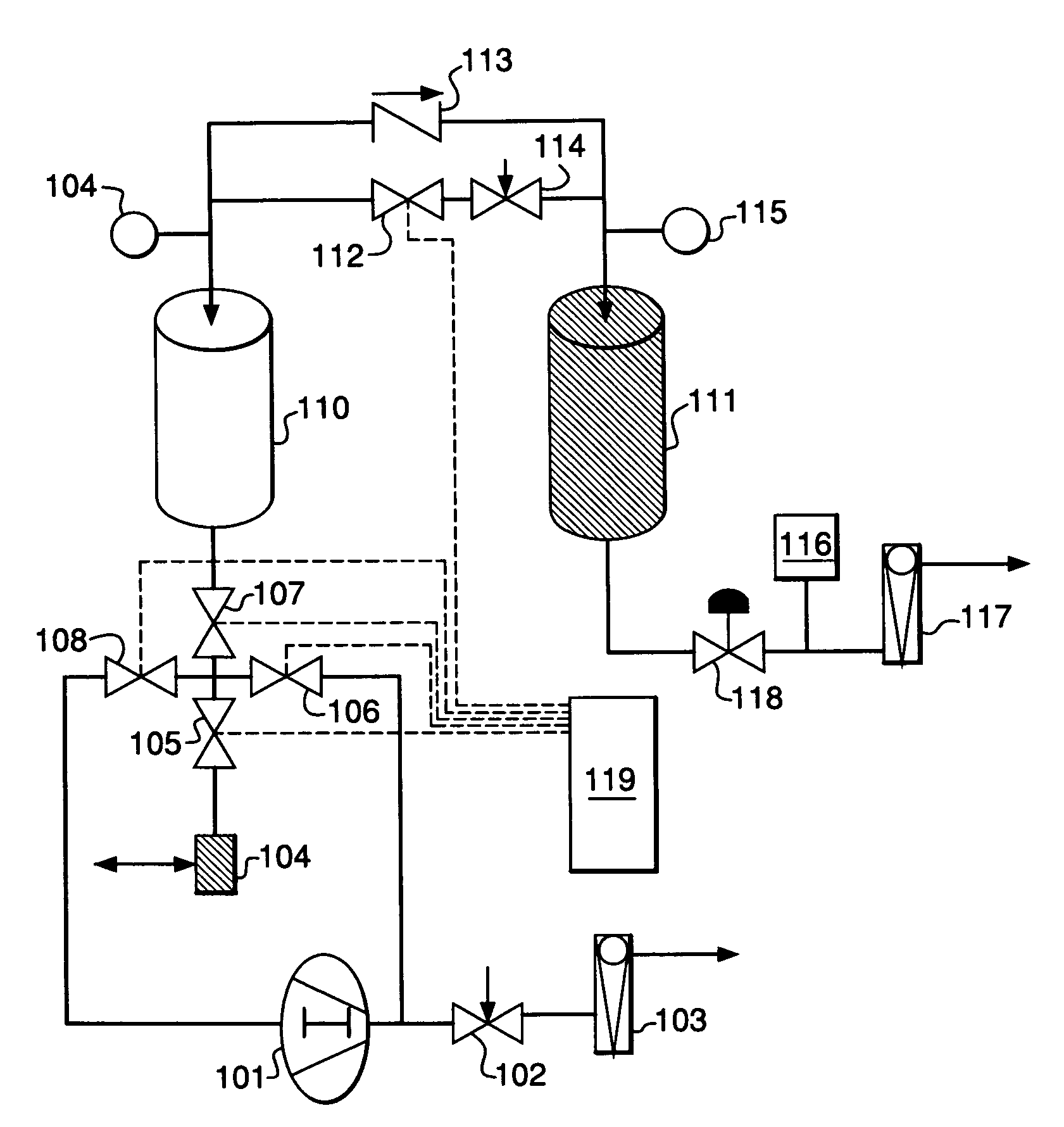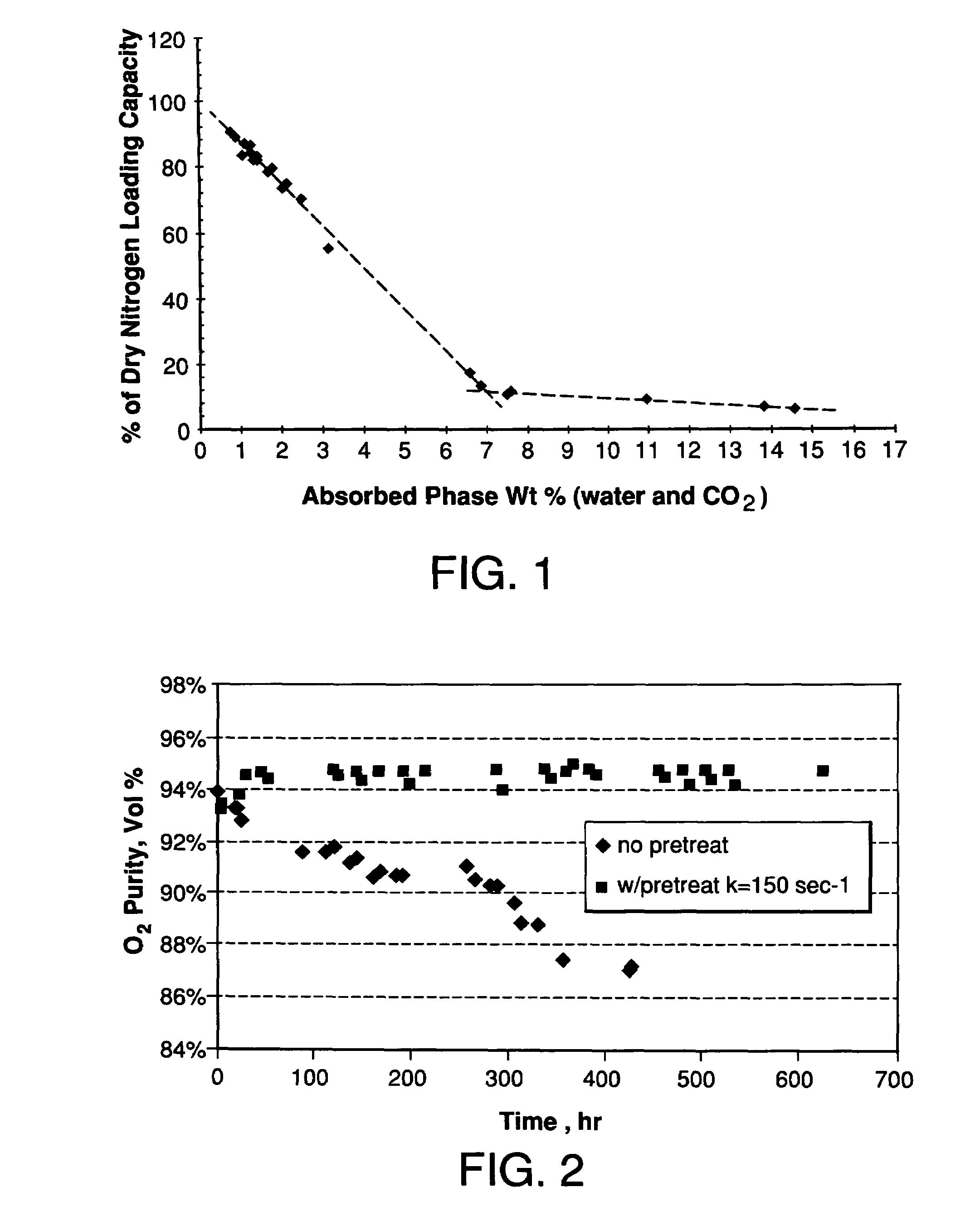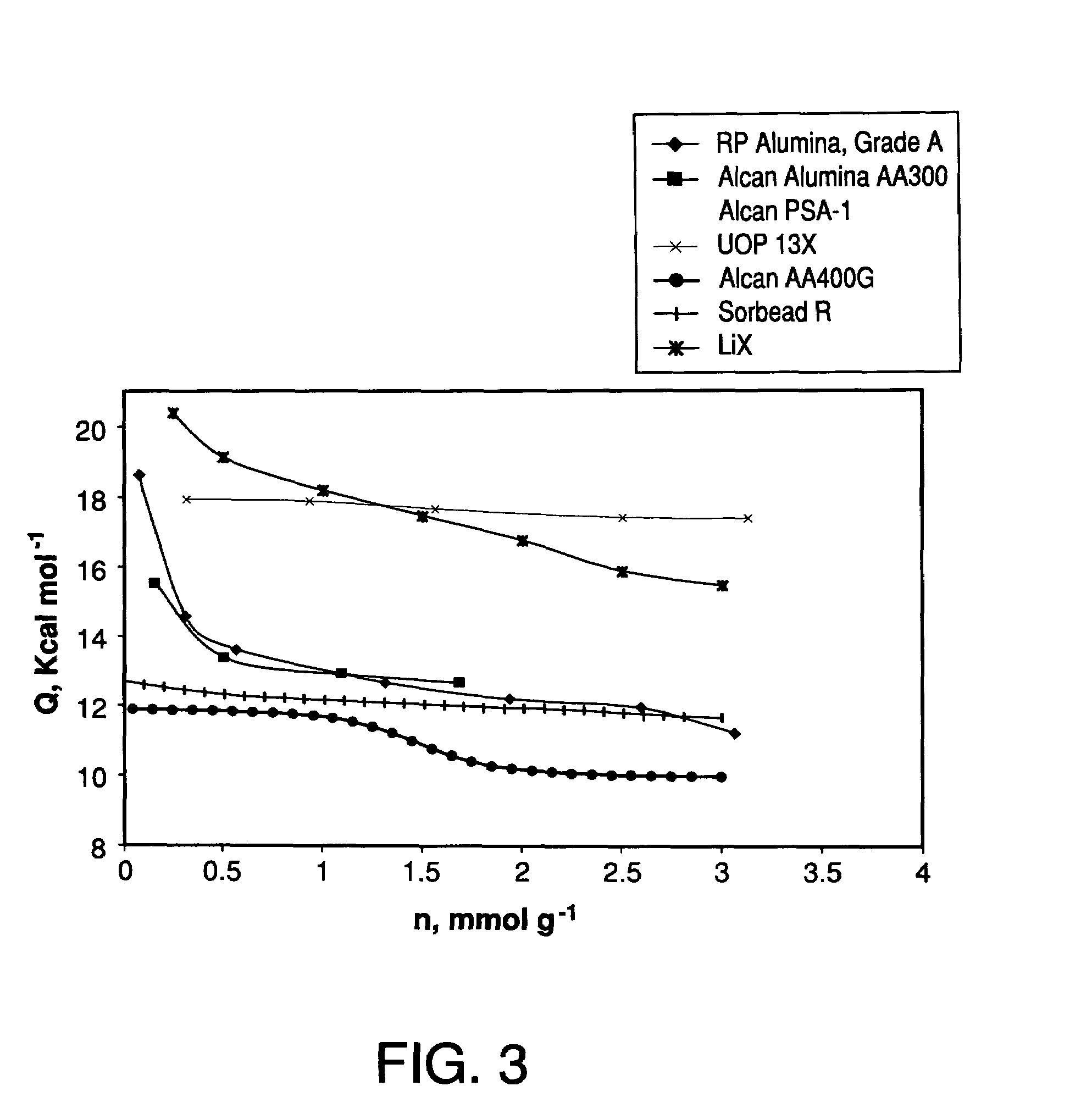Performance stability in shallow beds in pressure swing adsorption systems
a technology of adsorption system and performance stability, which is applied in the direction of oxygen/ozone/oxide/hydroxide, breathing protection, separation process, etc., can solve the problems of increasing the cost and weight of the oxygen concentrator system, affecting the performance of small psa air separation system, and especially serious impa
- Summary
- Abstract
- Description
- Claims
- Application Information
AI Technical Summary
Problems solved by technology
Method used
Image
Examples
example 1
[0051]The mass transfer properties of the pretreatment adsorbent were also used to predict the performance of a four-bed process previously described in patent application EP1598103A2 where cycle times were 6.0-8.0 seconds and individual step times were 0.75 to 1.0 seconds. This four bed process was run both in simulation and experimentally to illustrate the previously unrecognized relationship between the contaminant kinetics in the pretreatment layer and the overall product recovery and bed size factor in a portable system. Table 3 summarizes these experimental results.
[0052]
TABLE 3Effect of pretreatment adsorbent on overall performance of 4-bed VPSA process4-BedMain BedPre:MainProduction atRecovery,BSF,ExperimentSieveBed Ratiokwater, sec−193% O2, slpm%lb / TPDcBB326Oxysiv-MDX30 / 701253.166%156PB334Oxysiv-MDX25 / 751903.265%147
[0053]In the fast cycle process, the amount of water removed in the pretreatment layer strongly influences the effectiveness of the nitrogen removal since part o...
example 2
[0057]Simulations were made using the 4-bed process described in Example 1. Ambient conditions of 1 atm, 73° F., and 25% relative humidity were assumed. Beds of Alcan AA400G alumina pretreatment layer with highly exchanged LiLSX main bed layer were used in a 25 / 75 ratio (pretreatment layer / main layer). The total cycle time was 8 seconds and a heat transfer coefficient of 0.87 BTU lb−1hr−1° F.−1 was used. The simulations were made for various values of the pretreatment adsorbent particle size and water mass transfer coefficient, kw. The value of kw was varied according to the relation
[0058]kw∝DeffRp2[3]
where the effective diffusivity, Deff, was assumed to be constant for all particle sizes. Specific adiabatic power was determined for each case for comparison.
[0059]The results are presented in FIG. 6, which shows the product recovery effects of using small bead particles with increased pressure drop and a sharp increase in power where smaller particle sizes are used. An operating issu...
example 3
[0061]A single bed experiment was run using a 4-step process analogous the process described above. The adsorbent column was loaded with LiLSX having an average particle diameter of 0.8 mm and an Alcoa AL H152 pretreatment adsorbent with an average particle diameter of 2.0 mm. The cycle time was varied from 85-105 seconds with feed time varied between 25 and 45 seconds. The feed linear velocity ranged from 0.2 to 0.4 ft / sec. The adsorbent column length was 17 inches and 30% of the total length was the pretreatment layer. Oxygen product purity was 90% and remained steady for about 300 hours before the experiment was completed. The column heat transfer coefficient (HTC) was about 0.15 BTU lb−1hr−1° F.−1.
PUM
| Property | Measurement | Unit |
|---|---|---|
| particle diameter | aaaaa | aaaaa |
| particle diameter | aaaaa | aaaaa |
| weight | aaaaa | aaaaa |
Abstract
Description
Claims
Application Information
 Login to View More
Login to View More - R&D
- Intellectual Property
- Life Sciences
- Materials
- Tech Scout
- Unparalleled Data Quality
- Higher Quality Content
- 60% Fewer Hallucinations
Browse by: Latest US Patents, China's latest patents, Technical Efficacy Thesaurus, Application Domain, Technology Topic, Popular Technical Reports.
© 2025 PatSnap. All rights reserved.Legal|Privacy policy|Modern Slavery Act Transparency Statement|Sitemap|About US| Contact US: help@patsnap.com



